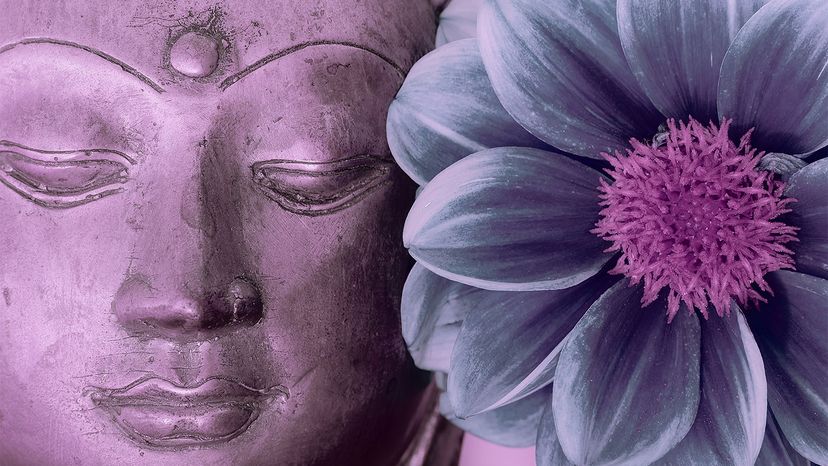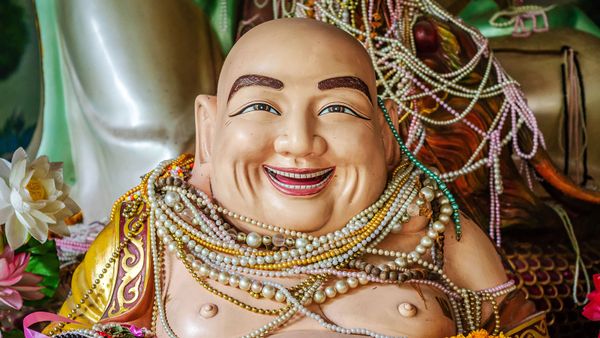Zen Buddhism migrated from China to Japan and Korea in the mid-1200s, says Heine, and each culture developed its own approach to koans. In Korea, Heine says, students were assigned one koan at a time, and they might meditate on that single koan for years before moving on to the next. In Japanese Zen tradition, there is a set curriculum of dozens or even hundreds of koans that each student has to "pass."
In the West, the conventional view of koans is that they are written to be purposefully paradoxical, even nonsensical. And there's good reason to think that way. Here are just a few classic koans that employ a "double-bind" — basically, a no-win situation.
A master holds up a stick and dares his students: "If you call this a stick, you will be clinging, and if you do not call this a stick, you will be ignoring the obvious. So, now, tell me, what do you call it?"
Another master challenges his students: "Keeping your tongues and lips closed, how will you speak?"
The master Pi-mo went around asking every monk he met:
What kinds of demons made you become a Buddhist priest? What kind of devil forced you to take up this pilgrimage? You will die from my pitchfork even if you explain it. You will die from my pitchfork even if you do not explain it. Now speak up quickly! Speak up quickly!
While Heine admits that some koans are simply mind games designed to break our brains and force us into new ways of seeing, others are rooted in ancient traditions that are hidden to most modern readers.
"If you immerse yourself in the context of the original tradition — which includes mythology, legends and cultural symbols from China, Japan and Korea — then you start to pick up on the obscure references," he says.
Here's an example. An eager monk asks his master, "Why did Zen come to Japan from China?" The master answers, "There is a cypress tree in the courtyard."
What? On the surface, it looks like another mind game. But through his research, Heine traced the koan back to a temple in Japan called the Cypress Forest Temple, which was surrounded by cypress trees.
"When you look at it that way, the meaning of the koan is clear," says Heine. "The master is saying, you're so eager that you're missing the forest for the trees. Instead of making no sense, it makes perfect sense."



